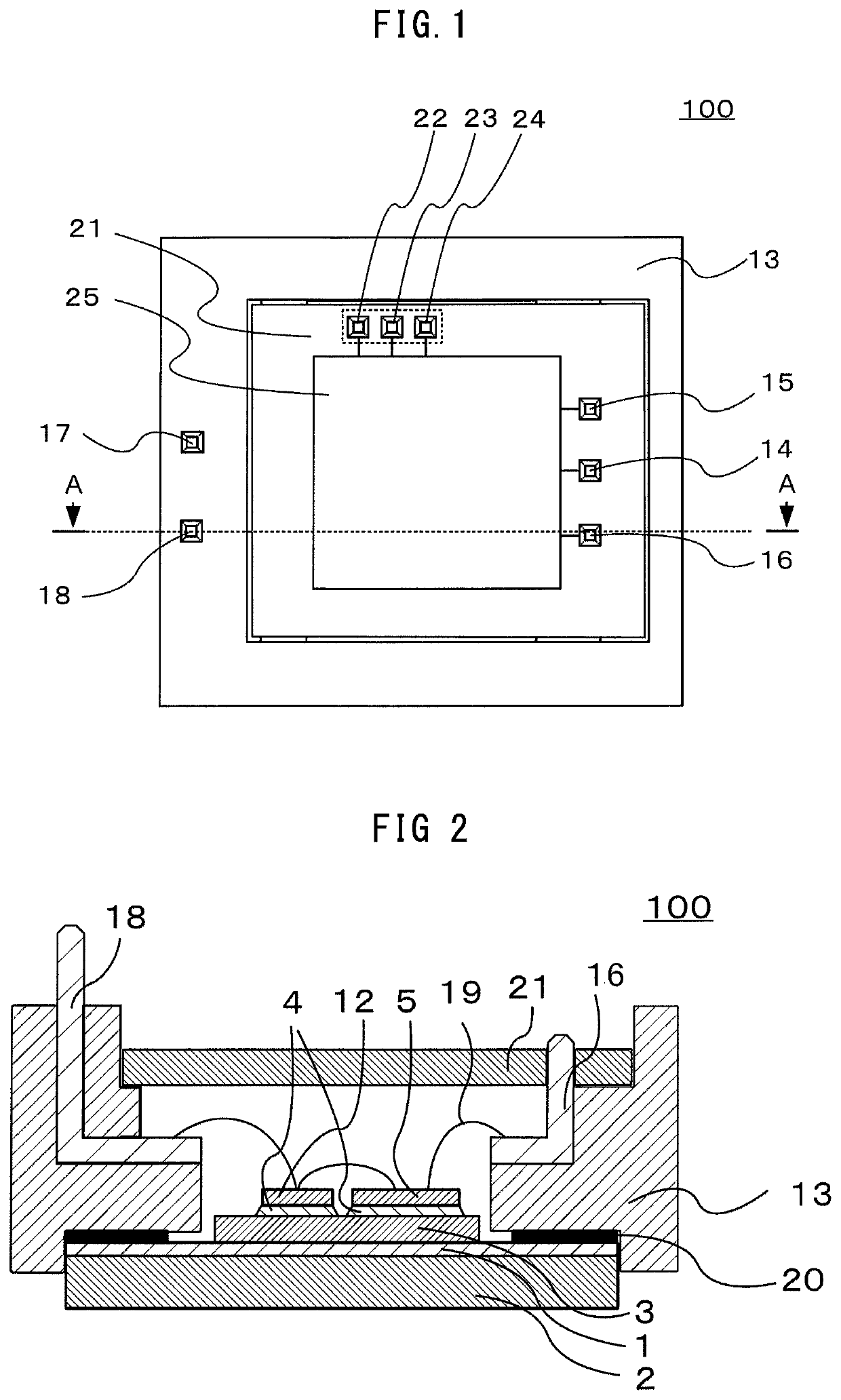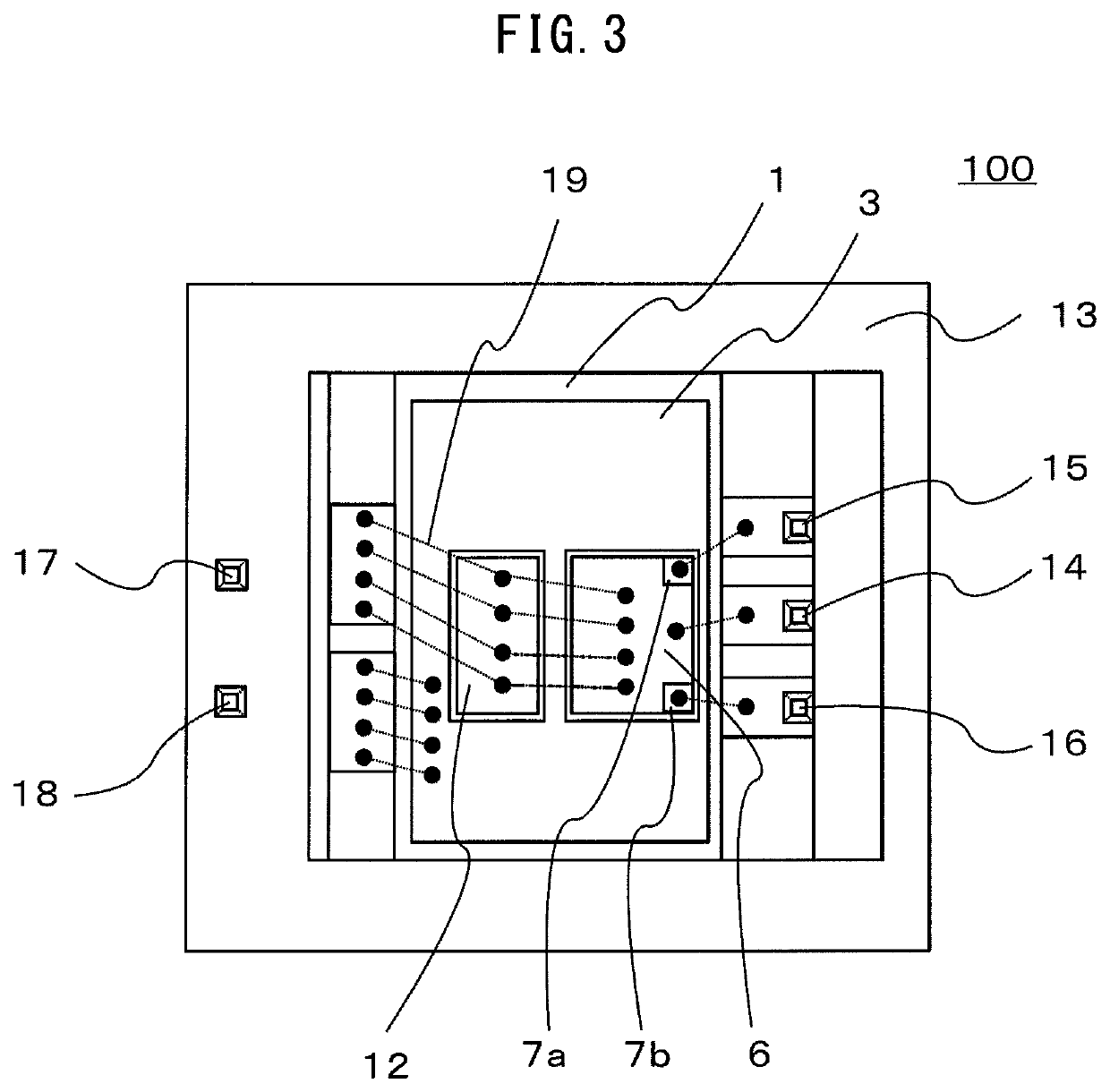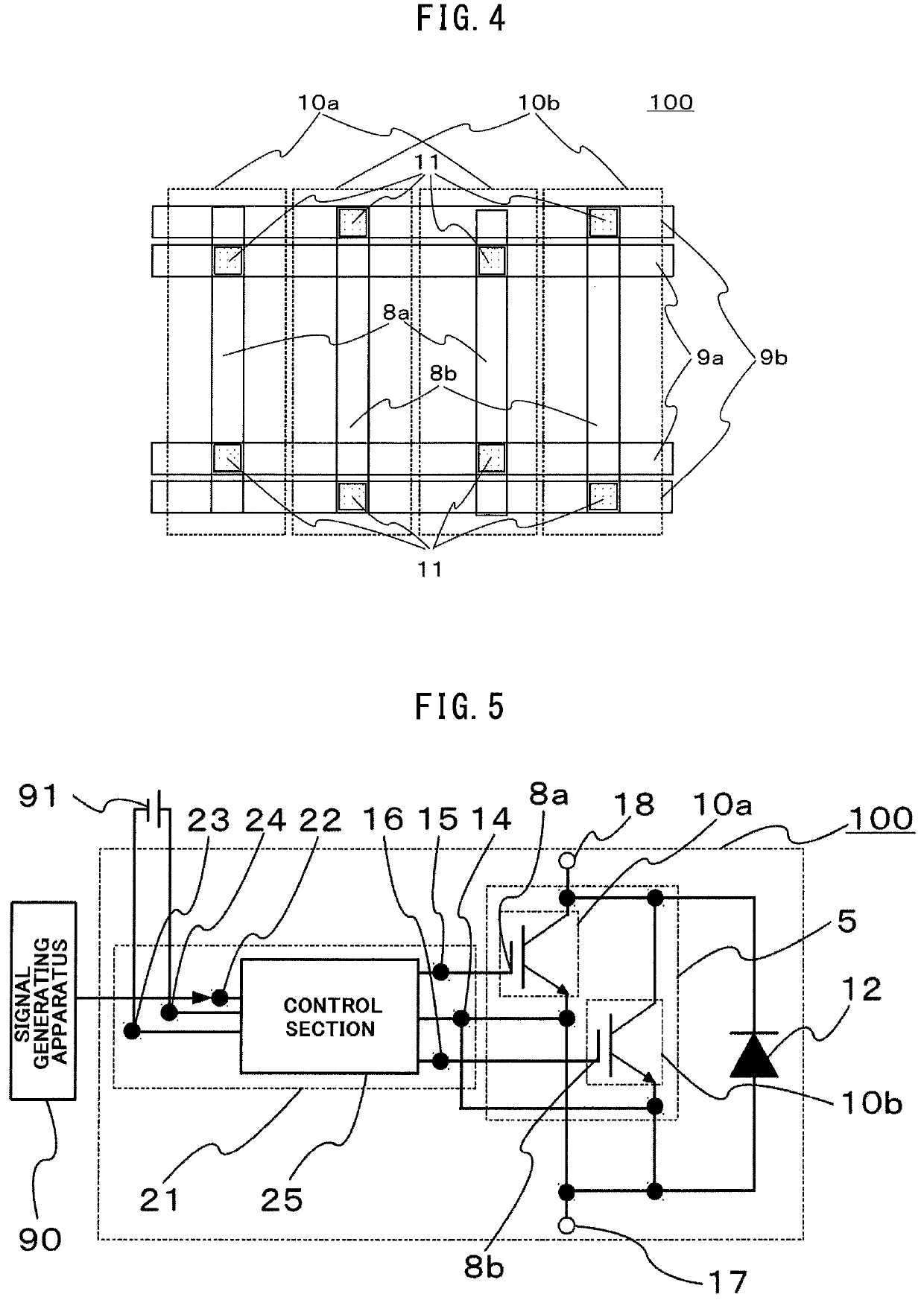Semiconductor device having first and second switching regions respectively controlled by first and second control signals output by a controller
a technology of switching region and control signal, which is applied in the direction of electronic switching, pulse technique, power conversion system, etc., can solve the problems of increasing turn-on loss and insufficient consideration of turn-on loss
- Summary
- Abstract
- Description
- Claims
- Application Information
AI Technical Summary
Benefits of technology
Problems solved by technology
Method used
Image
Examples
first embodiment
[0020]The configuration of a semiconductor device 100 according to a first embodiment of the present invention is explained. FIG. 1 is a plan view showing the configuration of the semiconductor device according to the first embodiment of the present invention. FIG. 2 is a sectional view showing the configuration of the semiconductor device according to the first embodiment. FIG. 1 is a plan view showing the semiconductor device 100 viewed from above. FIG. 2 is a sectional view taken along an A-A line shown in FIG. 1. In FIGS. 1 and 2, several members such as a sealing material filled on the inside of the semiconductor device 100 and a lid provided on the upper surface of the semiconductor device 100 according to necessity are omitted.
[0021]In FIG. 1, the semiconductor device 100 includes a resin case 13 having a rectangular shape in plan view and includes a control board 21 on the inner side of the resin case 13. The control board 21 includes a control section 25 and a plurality of ...
second embodiment
[0055]The configuration of a semiconductor device 200 according to a second embodiment of the present invention is explained. In the above explanation of the first embodiment, the second predetermined period t2 is controlled in the preset period by the configuration of the control section 25. However, in the second embodiment, the semiconductor device 200 includes a voltage detection circuit 250 for controlling the second predetermined period t2, and the second predetermined period t2 is controlled on the basis of a voltage between a high-potential-side signal terminal 260 and the reference-potential signal terminal 14 detected by the voltage detection circuit 250. In the second embodiment of the present invention, explanation about portions same as or corresponding to the portions in the first embodiment of the present invention is omitted.
[0056]The configuration of the semiconductor device 200 according to the second embodiment of the present invention is explained with reference ...
third embodiment
[0064]FIG. 10 is a plan view showing the configuration of a driving wire of a semiconductor chip mounted on a semiconductor device according to a third embodiment of the present invention. A semiconductor device 300 according to the third embodiment of the present invention is configured such that an electric charge amount necessary for completion of a voltage rise of second gate electrodes 308b is larger than an electric charge amount necessary for completion of a voltage rise of first gate electrodes 308a. The electric charge amounts necessary for the voltage rise completion of the first gate electrodes 8a and the second gate electrodes 8b indicate electric charge amounts necessary for the first gate electrodes 308a and the second gate electrodes 308b until the first gate electrodes 308a and the second gate electrodes 308b have a voltage equivalent to a set voltage of the power supply 91. The semiconductor device 300 in the third embodiment of the present invention is the same as ...
PUM
| Property | Measurement | Unit |
|---|---|---|
| threshold | aaaaa | aaaaa |
| channel current | aaaaa | aaaaa |
| electric charge | aaaaa | aaaaa |
Abstract
Description
Claims
Application Information
 Login to View More
Login to View More - R&D
- Intellectual Property
- Life Sciences
- Materials
- Tech Scout
- Unparalleled Data Quality
- Higher Quality Content
- 60% Fewer Hallucinations
Browse by: Latest US Patents, China's latest patents, Technical Efficacy Thesaurus, Application Domain, Technology Topic, Popular Technical Reports.
© 2025 PatSnap. All rights reserved.Legal|Privacy policy|Modern Slavery Act Transparency Statement|Sitemap|About US| Contact US: help@patsnap.com



